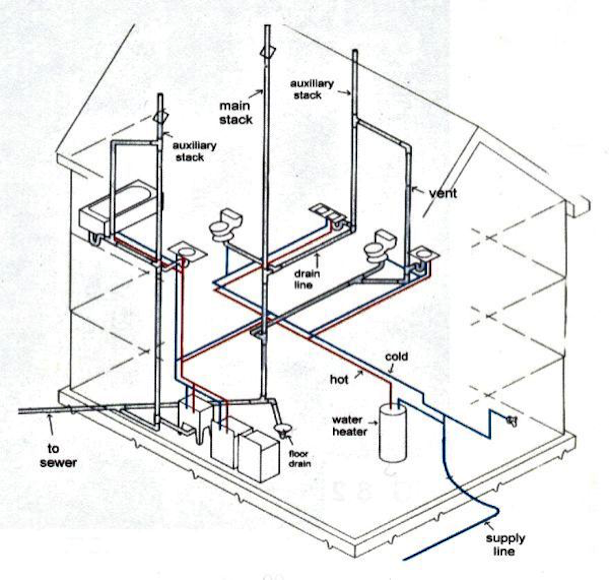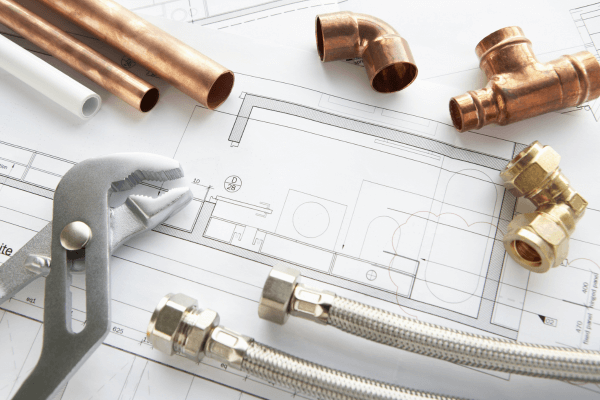What're your thoughts on Plumbing Installation 101: All You Need to Know?

Comprehending exactly how your home's pipes system functions is essential for every property owner. From delivering clean water for drinking, food preparation, and showering to securely getting rid of wastewater, a well-maintained plumbing system is essential for your household's health and wellness and convenience. In this detailed guide, we'll check out the complex network that composes your home's pipes and deal pointers on upkeep, upgrades, and taking care of usual concerns.
Introduction
Your home's plumbing system is more than just a network of pipes; it's a complicated system that ensures you have access to clean water and efficient wastewater removal. Knowing its components and how they work together can help you stop expensive repair services and make sure whatever runs smoothly.
Standard Elements of a Pipes System
Pipelines and Tubing
At the heart of your pipes system are the pipelines and tubing that lug water throughout your home. These can be made from various products such as copper, PVC, or PEX, each with its benefits in terms of longevity and cost-effectiveness.
Components: Sinks, Toilets, Showers, etc.
Components like sinks, bathrooms, showers, and bathtubs are where water is made use of in your home. Understanding exactly how these components attach to the pipes system assists in diagnosing troubles and intending upgrades.
Shutoffs and Shut-off Points
Valves regulate the flow of water in your pipes system. Shut-off shutoffs are important during emergency situations or when you require to make repair services, permitting you to separate parts of the system without disrupting water flow to the whole home.
Supply Of Water System
Key Water Line
The major water line links your home to the local supply of water or a private well. It's where water enters your home and is dispersed to different fixtures.
Water Meter and Stress Regulatory Authority
The water meter procedures your water usage, while a stress regulatory authority ensures that water moves at a risk-free pressure throughout your home's pipes system, avoiding damages to pipelines and fixtures.
Cold Water vs. Warm water Lines
Understanding the difference between cold water lines, which supply water straight from the main, and warm water lines, which carry heated water from the hot water heater, helps in fixing and preparing for upgrades.
Drainage System
Drain Pipes Piping and Traps
Drain pipes bring wastewater far from sinks, showers, and toilets to the drain or septic system. Traps avoid sewage system gases from entering your home and also trap debris that might create obstructions.
Ventilation Pipes
Air flow pipelines allow air into the drain system, stopping suction that could slow down water drainage and trigger catches to empty. Appropriate ventilation is vital for keeping the stability of your pipes system.
Importance of Appropriate Water Drainage
Guaranteeing correct drainage stops back-ups and water damages. Frequently cleaning up drains pipes and maintaining traps can protect against costly repair services and expand the life of your plumbing system.
Water Heater
Sorts Of Water Heaters
Hot water heater can be tankless or conventional tank-style. Tankless heating units warmth water as needed, while tanks keep warmed water for prompt use.
Upgrading Your Plumbing System
Factors for Updating
Upgrading to water-efficient fixtures or changing old pipelines can boost water quality, decrease water expenses, and raise the value of your home.
Modern Plumbing Technologies and Their Benefits
Check out modern technologies like clever leak detectors, water-saving toilets, and energy-efficient water heaters that can conserve cash and reduce ecological impact.
Expense Factors To Consider and ROI
Calculate the in advance prices versus long-term cost savings when taking into consideration plumbing upgrades. Numerous upgrades pay for themselves with lowered utility expenses and less fixings.
How Water Heaters Link to the Pipes System
Recognizing how water heaters link to both the cold water supply and warm water distribution lines helps in detecting problems like inadequate warm water or leakages.
Maintenance Tips for Water Heaters
Frequently purging your hot water heater to get rid of sediment, checking the temperature setups, and checking for leakages can expand its lifespan and improve energy effectiveness.
Typical Pipes Concerns
Leakages and Their Causes
Leaks can occur due to aging pipelines, loose fittings, or high water stress. Resolving leakages immediately stops water damage and mold development.
Blockages and Obstructions
Clogs in drains and commodes are commonly triggered by flushing non-flushable items or a buildup of oil and hair. Utilizing drain screens and bearing in mind what decreases your drains can prevent obstructions.
Indicators of Plumbing Troubles to Look For
Low water stress, slow-moving drains, foul odors, or unusually high water costs are indications of potential plumbing troubles that ought to be addressed without delay.
Pipes Maintenance Tips
Normal Assessments and Checks
Schedule yearly pipes evaluations to capture problems early. Look for signs of leakages, rust, or mineral buildup in faucets and showerheads.
DIY Upkeep Tasks
Straightforward jobs like cleaning tap aerators, checking for toilet leakages making use of color tablets, or insulating revealed pipelines in cold climates can protect against significant plumbing issues.
When to Call a Specialist Plumbing Technician
Know when a plumbing issue calls for expert knowledge. Trying complex fixings without appropriate knowledge can bring about more damage and greater repair work costs.
Tips for Lowering Water Usage
Simple routines like repairing leakages immediately, taking shorter showers, and running complete tons of washing and dishes can preserve water and lower your utility costs.
Eco-Friendly Pipes Options
Think about sustainable pipes products like bamboo for flooring, which is durable and environment-friendly, or recycled glass for countertops.
Emergency situation Preparedness
Actions to Take During a Pipes Emergency
Know where your shut-off shutoffs are located and just how to turn off the water in case of a burst pipeline or major leak.
Value of Having Emergency Get In Touches With Convenient
Keep call information for regional plumbers or emergency solutions readily offered for quick feedback during a pipes crisis.
Environmental Influence and Conservation
Water-Saving Components and Appliances
Setting up low-flow taps, showerheads, and toilets can substantially lower water usage without compromising efficiency.
DIY Emergency Situation Fixes (When Appropriate).
Short-lived repairs like making use of duct tape to spot a leaking pipeline or putting a pail under a dripping tap can reduce damages until an expert plumber shows up.
Conclusion.
Comprehending the makeup of your home's plumbing system encourages you to maintain it successfully, conserving time and money on fixings. By following routine upkeep regimens and staying informed regarding contemporary pipes innovations, you can guarantee your pipes system runs successfully for years to come.
Exploring Your Homes Plumbing Anatomy
Water Supply System
Main Water Line: This is where water enters your home from the municipal supply or a private well. Water Meter: Typically located near where the main water line enters the property, it measures the amount of water used. Shutoff Valve: It s crucial to know where this is in case of emergencies. It allows you to turn off the water supply to the entire house. Pipes and Fittings: These distribute water throughout your home. Materials can include copper, PVC, or PEX. Drain-Waste-Vent (DWV) System
Drains: Located in sinks, showers, and tubs, these carry wastewater away. Traps: U-shaped pipes under sinks that hold standing water, blocking sewer gases from entering the home. Vents: Pipes that lead from the DWV system to the outside, preventing vacuum formation and allowing gases to escape. Sewer Line: Carries all wastewater from the home to the municipal sewer system or a septic tank. Fixtures and Appliances
Sinks, Toilets, and Showers Dishwashers and Washing Machines Water Heaters Maintenance Tips
Regularly check for leaks in exposed pipes and around fixtures. Inspect the water heater annually for signs of wear. Clean drains and traps to prevent clogs and odors. Know how to shut off water to individual fixtures. When to Call a Professional
Major leaks or burst pipes Installation of new pipes or fixtures Septic tank issues Remodeling projects that involve plumbing changes Conclusion
Understanding the anatomy of your home's plumbing is key to maintaining a functional and efficient system. Regular checks and knowing when to call in the experts can save you time, money, and stress.
https://www.mavyn.com/blog/exploring-your-homes-plumbing-anatomy

As a keen person who reads on Understanding Your Home's Plumbing Anatomy, I assumed sharing that information was beneficial. In case you appreciated our post plz make sure you remember to pass it around. We treasure reading our article about .
Book Today